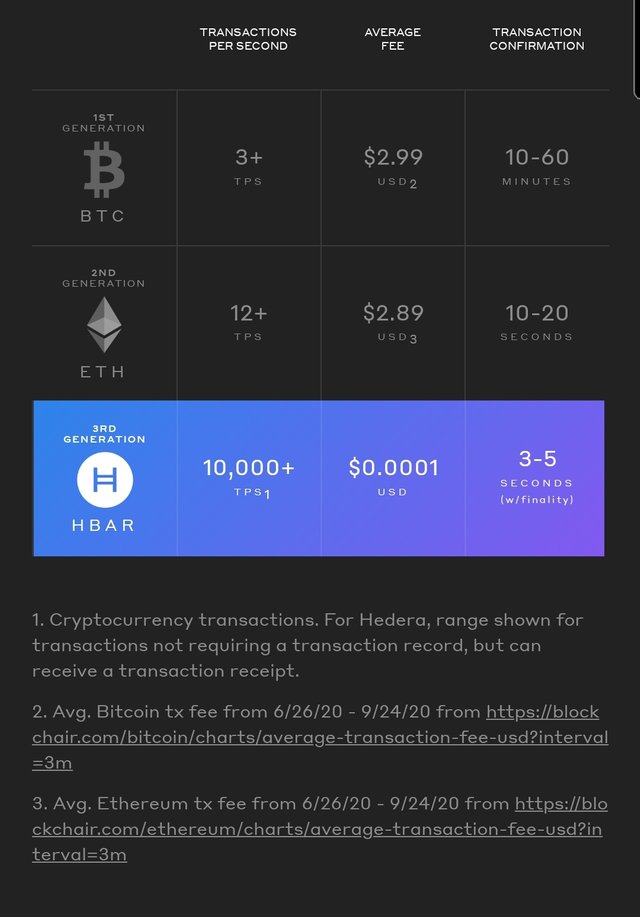HBAR - Hedera Hashgraph - Currency of the Future
What is Hedera Hashgraph?
Hedera is a public distributed ledger and governing body built from the ground-up to support new and existing applications. Developers use Hedera Hashgraph to build computational trust directly into their applications using its network services.
Hedera is unique in that it achieves the same result as the most ubiquitous public blockchains (such as Bitcoin or Ethereum), but in a way that is faster and more energy-efficient — these advantages are attributed to the underlying hashgraph consensus algorithm and the global enterprise governing body, which owns and operates Hedera today.
Hedera is the only public ledger that utilizes hashgraph consensus, a faster, secure alternative to proof-of-work consensus mechanisms. It works efficiently to verify transactions on the Hedera network while ensuring the highest security standard to prevent malicious attacks.
The public ledger is stored on mainnet nodes, initially run by the Hedera Governing Council — the governing council today includes companies such as Google, IBM, Boeing, Deutsche Telekom, LG, and more. In the future, mainnet nodes will be permissionless and run by anyone without informing Hedera.
Hedera network services are a set of APIs that allow developers to build decentralized applications. Each API call has an associated transaction fee based on the processing and storage required. As of 2020, there are over 40 applications deployed on the mainnet, performing over 1.4 million transactions per day (October 2020).
Hedera also offers integrations for blockchain frameworks, such as Hyperledger Fabric and R3 Corda, which combine a private network’s privacy with a public network’s trust. By connecting permissioned blockchain frameworks to Hedera Hashgraph, private applications can offer public verifiability and decentralized ordering of transactions.
Hashgraph vs Blockchain
Hashgraph is the underlying consensus mechanism powering the Hedera public network – it’s what differentiates Hedera from any other public distributed ledger.
Hashgraph consensus is a DAG (direct acyclic graph) created in 2015 by Dr. Leemon Baird. A few months later, Dr. Baird and his longtime friend and business partner, Mance Harmon, form Swirlds, Inc. (a portmanteau of “shared worlds”) to develop proofs of concept and to commercialize hashgraph for private implementations. Their more extensive and longer-term vision is to use hashgraph to enable a truly decentralized, fast, fair, and secure public distributed ledger that could achieve mainstream adoption and serve as the “trust layer of the Internet” — later known as Hedera Hashgraph.
Hedera offers better performance than so-called 1st and 2nd generation blockchains like Bitcoin and Ethereum. According to their website, a cryptocurrency transaction or Hedera Consensus Service message takes between 3 - 5 seconds to settle with finality, costs USD 0.0001 (paid in HBAR cryptocurrency), and can reach 10,000 of these transactions per second.
For reference, Visa processes about 1,700 transactions per second on average, although the network can handle more traffic during peak demand. Hedera more than meets even the highest demands for transaction throughput.
Hedera transaction times and fees
Merchants can accept zero-confirmation transactions on the Bitcoin network. And while these transactions take just a few seconds to propagate through the network, they’re not finalized until thirty to sixty minutes later. By having sub-5-second finality, Hedera is exponentially faster than both Bitcoin and Ethereum.

please inform about the use cases for hbar. thank you
Able to do that many transactions, I could see CBDC using this. Given that it does 10k TPS. Quite a few possibilities really.